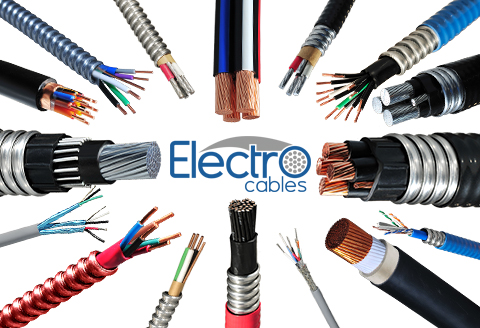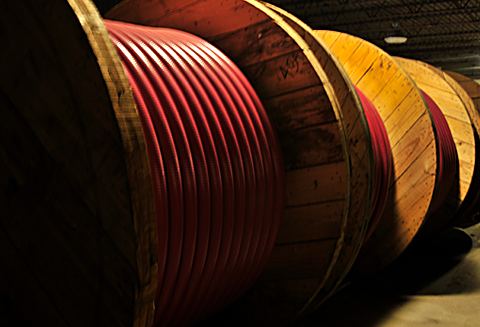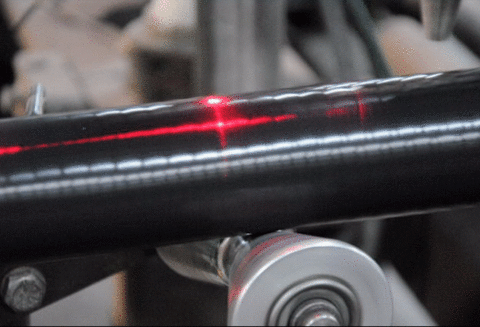A partner you can trust
How to Choose the Best Flat Power Cable for Your Needs
In today's fast-paced world where convenience and efficiency reign supreme, the importance of selecting the right flat power cable cannot be overlooked. Whether you're setting up a home entertainment system, organizing your workspace, or aiming for a sleek and tidy look in your living area, a flat power cable can make all the difference. Designed to take up less space and reduce clutter, flat power cables offer a practical solution for various electronic needs.

However, with numerous options available in the market, choosing the best flat power cable tailored to your specific requirements can be overwhelming. This guide aims to simplify that process, outlining key factors to consider such as length, material, and compatibility, ensuring that you make an informed decision and optimize your electrical setup for both functionality and aesthetics.
Understanding the Basics of Flat Power Cables and Their Applications
Understanding flat power cables is essential for selecting the right one for your applications. These cables are designed to provide efficient power distribution while saving space, making them an ideal choice in various environments, from commercial setups to home electronics. According to a recent market report by Grand View Research, the flat power cable market is projected to grow at a CAGR of 6.5% from 2021 to 2028, driven by the increasing demand in sectors such as telecommunications and renewable energy.
Flat power cables are particularly beneficial in tight spaces due to their lower profile, which not only eases installation but also enhances heat dissipation. A study from MarketsandMarkets indicates that flat cables are favored in industries such as automotive and aerospace, where weight reduction is crucial. The versatility of flat power cables allows them to be used effectively in powering LED displays, data centers, and even electric vehicles, supporting the shift towards more efficient energy solutions.
How to Choose the Best Flat Power Cable for Your Needs - Understanding the Basics of Flat Power Cables and Their Applications
| Cable Type | Current Rating (A) | Voltage Rating (V) | Dimensions (mm) | Applications |
|---|---|---|---|---|
| Flat PVC Cable | 10 | 300 | 5 x 2.5 | Home appliances |
| Flat Silicone Cable | 15 | 600 | 10 x 3.0 | Industrial equipment |
| Flat UL Listed Cable | 20 | 600 | 12 x 4.0 | Commercial lighting |
| Flat Low Voltage Cable | 5 | 24 | 8 x 1.5 | LED strip lights |
| Flat Power Extension Cable | 16 | 250 | 6 x 2.0 | Power distribution |
Key Factors to Consider When Selecting a Flat Power Cable
When selecting a flat power cable, there are several key factors to consider to ensure it meets your needs effectively. First, the specifications of the cable, including its current and voltage ratings, play a crucial role. It's essential to choose a cable that can handle the electrical load of your devices without overheating. Additionally, consider the length of the cable; selecting a length that fits your setup will prevent unnecessary strain and ensure efficient power delivery.

Another important aspect is the design and material of the flat power cable. Look for cables made from high-quality materials that offer durability and flexibility, especially if they will be used in tight spaces or moveable areas. Pay attention to the insulation as well, as high-quality insulation can provide better protection against interference and enhance safety. Finally, consider any specific features you might need, such as compatibility with smart home systems or built-in surge protection, to further tailor the cable to your requirements.
Comparing Different Materials: PVC vs. TPE for Flat Power Cables
When choosing the right flat power cable for your needs, understanding the differences between materials is crucial. Two popular materials used in flat power cables are PVC (Poly Vinyl Chloride) and TPE (Thermoplastic Elastomer). PVC is known for its durability and low cost, making it a common choice for a wide range of applications. It offers good resistance to abrasion, chemicals, and various environmental factors, which enhances its lifespan. However, PVC cables can become rigid at low temperatures and may not provide the flexibility required in highly dynamic setups.

On the other hand, TPE is gaining popularity due to its superior flexibility and resilience. TPE cables remain pliable even in extreme temperatures, allowing for greater maneuverability and easier installation in tight spaces. Furthermore, TPE is often considered more environmentally friendly since it can be recycled more easily than PVC. For professionals or enthusiasts who prioritize adaptability and sustainability, TPE cables may be the better option, especially for applications where the power cable needs to withstand bending or frequent movement.
Ultimately, the choice between PVC and TPE will depend on the specific requirements of your environment and application.
Evaluating Length and Gauge: Finding the Right Specifications
When selecting the best flat power cable for your needs, evaluating the length and gauge is crucial in ensuring optimal performance. The length of the cable
determines not just convenience, but also the potential for voltage drop. A longer cable can lead to diminished power delivery, so it's important to choose a length that accommodates your setup
without excessive slack. However, short cables may restrict your configuration options. Thus, finding a balance is key.
Another critical factor is the gauge of the cable. The gauge indicates the wire thickness, affecting the amount of current it can safely carry. A lower gauge number means a thicker wire, capable of
handling more power without overheating. Understanding the requirements of your devices will help you select the appropriate gauge. For instance, if you’re powering high-wattage equipment, choosing a thicker cable is essential.
Tips: Always consider the specific requirements of your devices before making a purchase. If unsure, consult the manufacturer’s guidelines for optimal cable specifications. Additionally, investing in
high-quality materials can enhance durability and performance, ensuring reliable operation over time.
Tips for Ensuring Safety and Compliance with Flat Power Cables
When selecting a flat power cable, ensuring safety and compliance is crucial, particularly in small blocks where electrical safety is paramount. Flat power cables are often favored for their space-saving design, but their installation and usage must adhere to safety regulations set by authorities, such as the Electrical and Mechanical Services Department (EMA). It is vital to engage Licensed Electrical Workers (LEWs) for any electrical work. This not only guarantees that the installation aligns with safety standards but also minimizes the risks of electrical fire hazards in your premises.
Moreover, when choosing a flat power cable, look for options that meet industry certifications. These certifications indicate that the cable has undergone rigorous testing for safety and durability. Pay attention to the cable’s insulation material and its capacity to withstand heat, as inadequate insulation can lead to overheating and potential fire risks. Additionally, ensure that the installation is regularly inspected and maintained by professionals to identify any wear and tear that could compromise electrical safety. By following these guidelines, you can enhance both safety and compliance in your electrical projects.
Power Cable Safety Compliance and Performance
Related Posts
-

Essential Guide to Understanding Twin and Earth Cable Specifications and Applications
-

8 Essential Tips for Choosing the Best Outdoor Electrical Cable for Your Next Project
-

Comprehensive Guide to Selecting the Best Flexible Cable Conduit for Your Project
-

The Ultimate Guide to Choosing the Right Outdoor Electrical Cable for Your Needs
-

The Future of Underground Cable Conduit: Innovations Shaping Tomorrow's Infrastructure
-

Ultimate Guide to Choosing the Right Shore Power Cable for Your Business Needs

Products
Products
LEARN MORE
Current Inventory
Current Inventory
LEARN MORE
Custom Solutions
Custom Solutions
WE CAN HELPLighting Power & Control-Signal Cable
This content is restricted to site members. If you are an existing user, please log in. New users may register … LEARN MORE “Lighting Power & Control-Signal Cable”
LOOKING
FOR HELP?
We are here to help. You can contact us or create an account online to have access to special products, technical specifications and our new online quote tool.
ELECTRO CABLES
9 Riverside Drive
P.O. Box 276
Trenton, Ontario
CANADA K8V 5R5
N.A. Toll Free: 888-ELECTRO
(1-888-353-2876)
World: 613-394-4896
Fax: 613-394-4101
Email: sale@machinecables.com
We manufacture cables that are certified by the Canadian Standards Association (CSA), listed by Underwriters Laboratories and/or listed by Intertek (ETL).
Our quality management system is registered to ISO 9001: 2015. Our team is dedicated to consistently providing quality service and products to our customers.

© 2025 ELECTRO CABLES • SITE BY SNAP 360•
